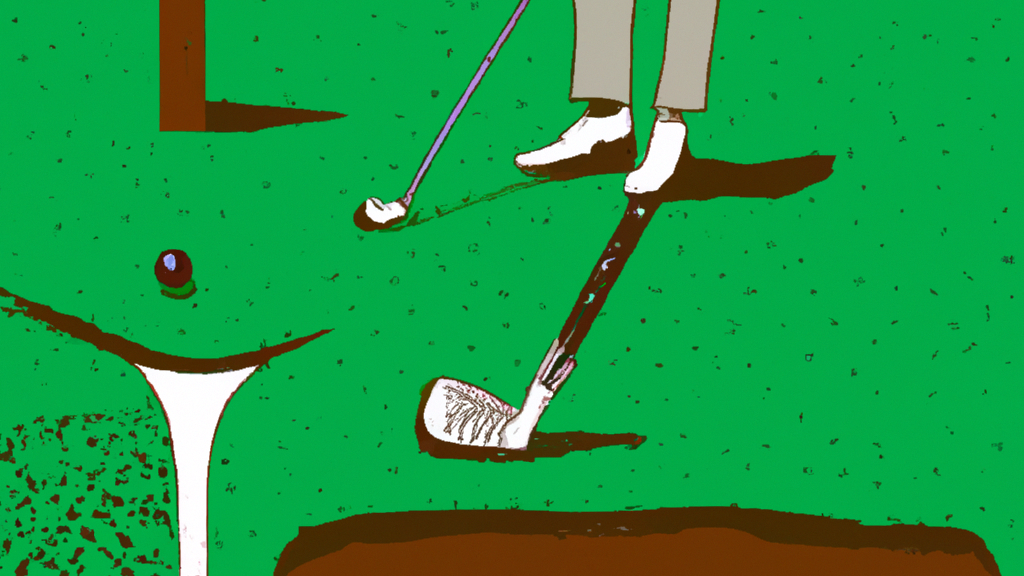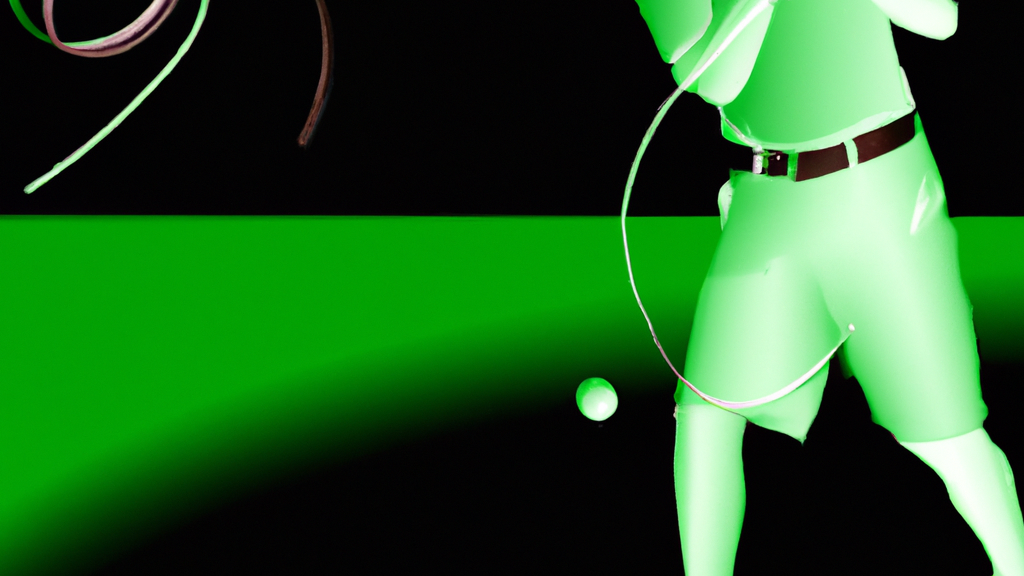HOW TO IMPROVE YOUR GOLF GAME WITH FOAM ROLLING
Golf is a sport that requires a lot of physical and mental strength. It’s not just about hitting the ball, but also about maintaining proper posture, balance, and flexibility. That’s why many golfers turn to foam rolling to improve their game. Foam rolling is a form of self-massage that helps to release tension in the muscles, increase blood flow, and improve range of motion. By incorporating foam rolling into your pre-game routine, you can improve your golf swing, reduce the risk of injury, and enhance your overall performance on the course.
In this article, we’ll explore the benefits of foam rolling for golfers and provide you with some tips on how to incorporate it into your golfing routine. So, whether you’re a seasoned pro or just starting out, read on to learn how foam rolling can help you improve your golf game.

HOW TO IMPROVE YOUR GOLF GAME WITH FOAM ROLLING
Golf is a sport that requires a lot of physical and mental strength. It is a game that demands precision, accuracy, and focus. Golfers need to have a strong core, flexible muscles, and good posture to play the game well. Foam rolling is a technique that can help golfers improve their game by increasing flexibility, reducing muscle soreness, and improving posture. In this article, we will discuss how foam rolling can help golfers improve their game and provide tips on how to incorporate foam rolling into their golfing routine.
What is Foam Rolling?
Foam rolling is a self-myofascial release technique that involves using a foam roller to apply pressure to specific areas of the body. The pressure helps to release tension in the muscles and fascia, which can improve flexibility, reduce muscle soreness, and improve posture. Foam rolling is commonly used by athletes to improve their performance and reduce the risk of injury.
How Can Foam Rolling Improve Your Golf Game?
1. Flexibility
Flexibility is essential for golfers. A golfer needs to be able to rotate their body to generate power and accuracy in their swing. Foam rolling can help improve flexibility by releasing tension in the muscles and fascia. By using a foam roller to target specific areas of the body, golfers can increase their range of motion and improve their ability to rotate their body during their swing.
2. Reduced Muscle Soreness
Golfers often experience muscle soreness after a round of golf. This soreness can be caused by the repetitive nature of the swing and the strain it puts on the muscles. Foam rolling can help reduce muscle soreness by increasing blood flow to the muscles and reducing inflammation. By incorporating foam rolling into their post-round routine, golfers can reduce muscle soreness and recover faster.
3. Improved Posture
Good posture is essential for golfers. A golfer needs to maintain a stable and balanced posture throughout their swing to generate power and accuracy. Foam rolling can help improve posture by releasing tension in the muscles that contribute to poor posture. By targeting specific areas of the body with a foam roller, golfers can improve their posture and reduce the risk of injury.
How to Incorporate Foam Rolling into Your Golfing Routine
Foam rolling can be incorporated into a golfer’s pre-round and post-round routine. Here are some tips on how to incorporate foam rolling into your golfing routine:
Pre-Round Routine
Foam rolling can be used as part of a golfer’s warm-up routine. By using a foam roller to target specific areas of the body, golfers can increase blood flow to the muscles and prepare their body for the round ahead. Here are some tips on how to incorporate foam rolling into your pre-round routine:
- Start with the lower body: Begin by using a foam roller to target the calves, hamstrings, and glutes. These muscles are essential for generating power and stability during the swing.
- Move to the upper body: Next, use a foam roller to target the upper back, shoulders, and chest. These muscles are essential for maintaining good posture during the swing.
- Finish with the core: Use a foam roller to target the core muscles, including the abs and obliques. These muscles are essential for generating power and stability during the swing.
Post-Round Routine
Foam rolling can also be used as part of a golfer’s post-round routine. By using a foam roller to target specific areas of the body, golfers can reduce muscle soreness and improve recovery. Here are some tips on how to incorporate foam rolling into your post-round routine:
- Start with the lower body: Begin by using a foam roller to target the calves, hamstrings, and glutes. These muscles are often sore after a round of golf and can benefit from foam rolling.
- Move to the upper body: Next, use a foam roller to target the upper back, shoulders, and chest. These muscles can become tight and sore after a round of golf and can benefit from foam rolling.
- Finish with the core: Use a foam roller to target the core muscles, including the abs and obliques. These muscles can become fatigued after a round of golf and can benefit from foam rolling.
Conclusion
Foam rolling is a technique that can help golfers improve their game by increasing flexibility, reducing muscle soreness, and improving posture. By incorporating foam rolling into their pre-round and post-round routine, golfers can prepare their body for the round ahead and recover faster after the round. If you are a golfer looking to improve your game, consider adding foam rolling to your golfing routine.

- Foam rolling for golfers | OTL Magazine
These foam rolling exercises help warm up your back, hips, and legs, helping to increase the range of motion and mobility for your golf swing. - Fitness Friday: Five hacks for foam rolling | This is the Loop | Golf …
Jan 22, 2016 … The oblique muscles (sides of your abdomen) also are a great group to massage in order to improve the range of your golf swing as well as … - Exam Room – Roll It Like the Pros – AvidGolfer Magazine
Sep 4, 2018 … Foam rolling can decrease your chance of injury by reducing overuse of muscles from the golf swing and breaking down scar tissue build up. - Day 6: How Foam Rolling Will Help Your Golf Muscles | Instruction …
Feb 23, 2016 … Day 6: Prep Your Golf Muscles With A Foam Roller … help maintain your posture while your thoracic spine rotates during the golf swing. - Foam Roll Your Way to a Better Swing. | Article | TPI
Foam Roll Your Way to a Better Swing. Wed Dec 18, 2013 by Dave Phillips. Foam rolling is a technique that many PGA Tour players use to prepare their bodies … - Foam Rolling 101: Everything You Need to Know to Get Rolling …
Sep 14, 2020 … Foam rolling is a self-myofascial release technique used to alleviate muscle pain, help sore muscles, and increase blood flow. - Weekly Golf Fitness Tip: Use Foam Roller for a More Fluid Swing …
Aug 10, 2020 … Learn how this simple routine with a foam roller can help mobilize your entire back and positively impact your golf game. - Golf season is coming. Are you up to par? | Edward-Elmhurst Health
May 13, 2019 … Improving stabilization through a variety of golf-related strength … stretches and targeted foam rolling prior to exercise or a game, … - An Introduction to the Foam Roller – The Golfer’s Best Friend | Golf …
Nov 24, 2014 … The kinetic chain that powers your golf swing is made up of the soft … The bottom line: the foam roller will make you a better golfer. - Improve Your Golf Game With These Hip Mobility Stretches
Feb 5, 2015 … These stretches included a self-myofascial release technique (foam rolling) for the IT Band, the Leg Cradle Stretch, Frog Stretch, …
Stuff about How to Improve Your Golf Game with Foam Rolling you didn’t know
- Golf was first played in Scotland in the 15th century, but it wasn’t until the late 1800s that it became popular in America.
- The Masters Tournament, one of golf’s most prestigious events, has been held annually at Augusta National Golf Club since 1934.
- Professional golfer Tiger Woods is widely considered one of the greatest players of all time, with a record-breaking career that includes 82 PGA Tour wins and 15 major championships.
- Many country clubs offer more than just golf – amenities such as tennis courts, swimming pools and fine dining are often available to members as well.
- The Ryder Cup is a biennial team competition between Europe and the United States; it was first contested in 1927 and has become one of golf’s most exciting events.
- In addition to physical skill, mental toughness is also crucial for success on the course – many professional players work with sports psychologists to improve their focus and concentration during play.
- Golf balls were originally made from wood or leather; today they are typically made from synthetic materials like rubber or plastic.
- Caddies have long been an important part of golfing culture – traditionally young men who carried clubs for wealthy players on courses around the world





